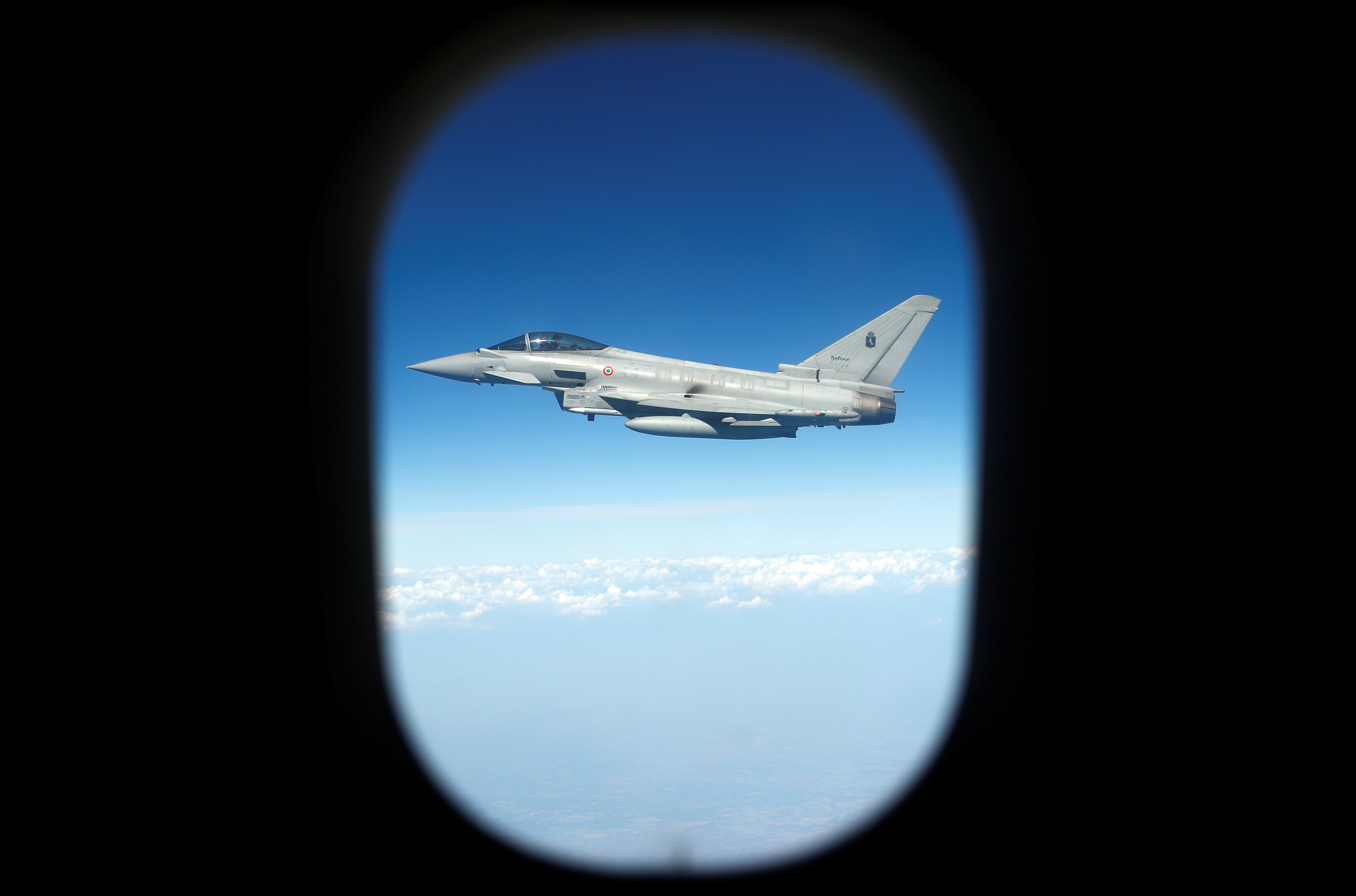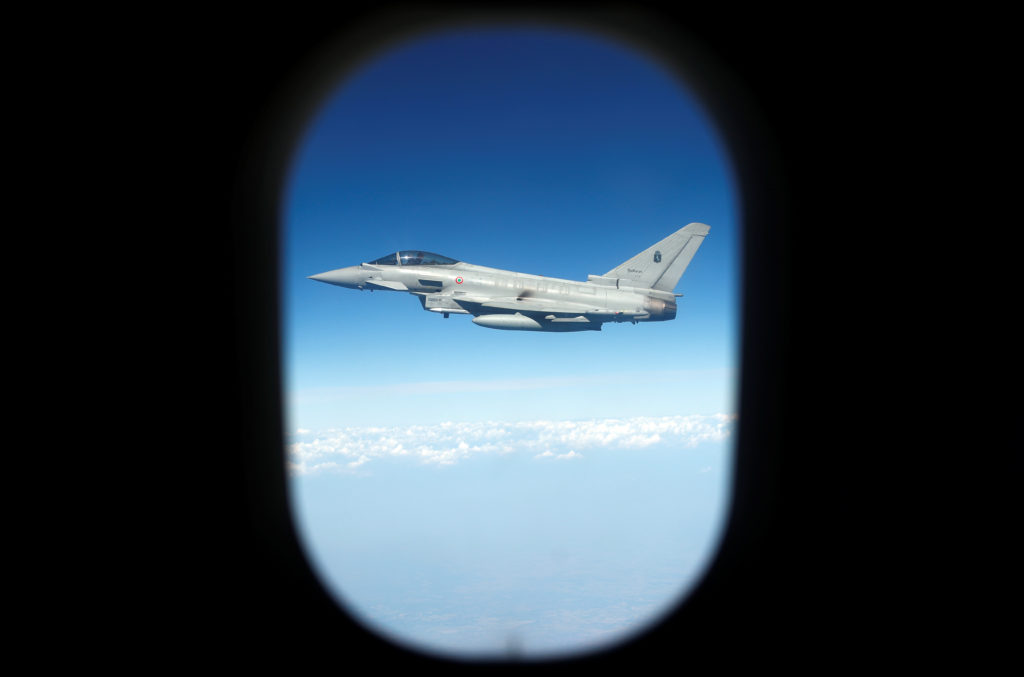European NATO jets showcase unified Russian deterrence
Encounters between NATO and Russian aircraft in the Arctic and elsewhere are reminiscent of the Cold War.

ON BOARD A BELGIAN AIR FORCE PLANE — British, French and German fighter jets simulated flight interceptions over Western Europe on Wednesday as part of NATO drills to deter Russian planes from entering allied airspace and to showcase European efforts to integrate their air defenses.
Fighter pilots carrying air-to-air missiles from 10 NATO nations took turns to simulate the interception of a Belgian air force transport plane en route to Spain, performing visual inspections of the aircraft’s status by hovering off the wings at speeds of 900 km/hour (560 mph).
Some 60 NATO jets, mainly from European allies, are on alert to defend alliance airspace, as NATO deals with a dramatic increase in Russian air activity on its borders since Moscow’s annexation of Crimea in 2014, with a record 870 interceptions in the Baltics alone in 2016.
This month, Moscow is holding its largest war games since the fall of the Soviet Union, with some 1,000 aircraft.
“NATO is relevant. This is not theoretical,” said Spanish Air Force Lieutenant General Ruben Garcia Servert on board the Belgian military transport plane, as Italian Eurofighters flew close to the cockpit to simulate interceptions. They later included British Typhoons and French Mirages.
“We have not always been successful in showing the taxpayer that we have the means and the capabilities to protect the population,” he told Reuters during a rare mid-air public display of flight interceptions.
European allies hope such displays highlight how their air forces are defending Europe in the face of sharp criticism from U.S. President Donald Trump, who at a summit in July railed against Europeans for not spending enough on defense and ports.
Able to divert, force to land or potentially even shoot down combat aircraft, NATO says its so-called air policing is not directed at Russia. But showdowns between rival warplanes in the Baltic and Black Sea are intensifying.
Two U.S. jets escorted two Russian bombers over the Arctic Ocean on Sept. 7 in the latest incident, while Russia has scrambled fighter jets to intercept nuclear-capable U.S. bombers in interceptions that have echoes of the Cold War.
Analysts warn that any collisions in the air over the Mediterranean, Baltic or Black Sea could risk the start of a wider conflict with Russia.
‘Single sky’ defenses
Both sides accuse the other of dangerous pilot behavior, but NATO says Russian warplanes regularly fly without respecting international safety norms, such as responding to air traffic control and requests to identify themselves. Russia says all its flights are conducted in accordance with international law.
“We have seen aircraft coming to our borders without flight plans, without any kind of controls … safety regulations, entering into our area,” Garcia Severt said.
“We have seen frequent activities in the Black Sea, but not only, sometimes we have seen aircraft flying around Europe,” he said, referring to Russian bombers off Portugal’s coast.
NATO will hold its biggest exercise since 2002 in October and November in Norway, called Trident Juncture, and involving non-NATO Finland and Sweden, with more than 40,000 troops.
While tensions with Russia have already prompted NATO to deploy multinational land battalions in Poland and the Baltics, NATO is also pushing to integrate its air forces, despite political resistance over issues of sovereignty.
Under an agreement being negotiated, individual NATO countries’ air forces would defend each other’s airspaces, regardless of the country they are in, under a “single sky” concept that could see Portuguese planes defending Spanish airspace, for example.
Today, each nation defends its own airspace, unless, as in the case of the Baltics, it does not have fighter planes.









